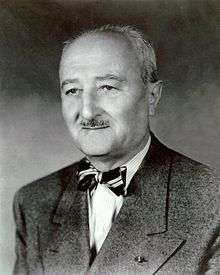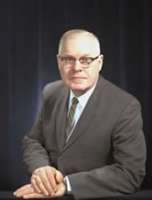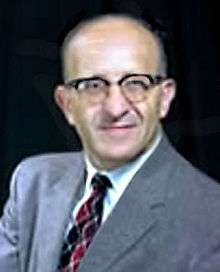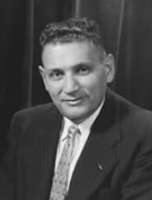Signal Intelligence Service
The Signal Intelligence Service (SIS) was the United States Army codebreaking division, headquartered at Arlington Hall (former campus of Arlington Hall Junior College for Women, founded 1927 to 1942, on Arlington Boulevard in Arlington, Virginia, across the Potomac River from Washington, D.C.).
History
The Signal Intelligence Service was a part of the U.S. Army Signal Corps so secret that outside the office of the Chief Signal officer, it did not officially exist. SIS was an early predecessor to the modern National Security Agency (NSA) and later appropriated by the National Security Council who reappointed the resources into the modern NSA. William Friedman began the division with three "junior cryptanalysts" in April 1930. Their names were Frank Rowlett, Abraham Sinkov, and Solomon Kullback. Before this, all three of them had been mathematics teachers with no cryptanalysis background. Friedman was a geneticist who developed his expertise in cryptology at George Fabyan's Riverbank Laboratories Cipher Department during 1915 to 1917, prior to World War I.[1] Besides breaking foreign codes,[2] they were responsible for just about anything to do with the U.S. Department of War's code systems. The SIS initially worked on an extremely limited budget, lacking the equipment it needed to even intercept messages to practice decrypting.
Midway through World War II, in 1943, the Army Signal Intelligence Service (later the Army Security Agency) began intercepting Soviet (Russian) intelligence traffic sent mainly from New York City — assigning the code name "Venona" to the project. By 1945, some 200,000 messages had been transcribed, a measure of Soviet activity. On 20 December 1946, Meredith Gardner made the first break into the Venona code, revealing the existence of Soviet espionage at the Los Alamos National Laboratory work on the top-secret Manhattan Project, development of the atomic bomb.
 |
 |
 |
 |
| William Friedman (head of the SIS) | Frank Rowlett (junior cryptanalyst) | Abraham Sinkov (junior cryptanalyst) | Solomon Kullback (junior cryptanalyst) |
Intercept network

The Army intercept network during WWII had six fixed stations, which concentrated on Japanese military signals and Axis diplomatic traffic.[3]
- Vint Hill Farms Station, Warrenton, Virginia
- Two Rock Ranch, Petaluma, California
- Asmara, Eritrea
- Fort Shafter, Territory of Hawaii
- Fairbanks, Alaska
- New Delhi, India
See also
References
- ↑ "Cryptologic Almanac - NSA/CSS". Nsa.gov. 2009-01-15. Retrieved 2014-02-15.
- ↑ Bernard A. Weisberger "Eavesdropping on the Rising Sun," American Heritage, Fall 2009.
- ↑ Budiansky 2000, p. 357.
External links
- Pearl Harbor Review. Signal Intelligence Service. National Security Agency/Central Security Service. Nsa.gov.
- Bernard A. Weisberger "Eavesdropping on the Rising Sun", American Heritage.
- Budiansky, Stephen, Battle of wits: The Complete Story of Codebreaking in World War II, Free Press, 2000. стр.357 ISBN 978-0-684-85932-3.
- William F. Friedman, A Brief History of the Signal Intelligence Service, 29 June 1942, SRH 029, CCH Files.
- Anon. Centralized Control of U.S. Army Signal Intelligence Activities, SRH-276, CCH Files.
- Anon., "Memorandum" re O.C.S.O Conference, 19 July 1929.
- Anon., The Second Signal Service Battalion, SRH-135, CCH Files.
- U.S. Army Signals intelligence in World WAR II. A documentary history. Edited by James L. Gilbert and John P. Finnegan. Center of military history United States Army. Washington, D. C., 1993. 265 pp. ISBN 0-16-037816-8.
- Robert J. Hanyok. Eavesdropping on Hell: Historical Guide to Western Communications Intelligence and the Holocaust, 1939-1945, Series IV, Volume 9. Center cryptologie history. National Security Agence. 2004. 174 pp.